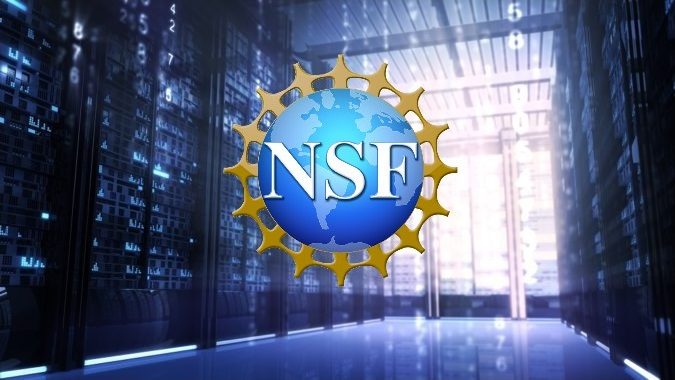While the HPC community is certainly aware of the shifting HPC technology landscape, it is worthwhile to occasionally take stock of how the overall changes are driving future architecture. Towards the end of last year, the National Science Foundation authored a paper outlining trends as NSF perceives them along with an explanation of the NSF Directorate of Computer and Information Science and Engineering (CISE) focus for coming years.
 The paper in IEEE Micro – Navigating the Seismic Shift of Post-Moore Computer Systems Design – is both a good summary and guide to NSF thinking (and funding) moving forward.
The paper in IEEE Micro – Navigating the Seismic Shift of Post-Moore Computer Systems Design – is both a good summary and guide to NSF thinking (and funding) moving forward.
“After years of increasing parallelism and heterogeneity, we are now navigating what has been termed a Cambrian explosion of diverse and specialized hardware elements. From programmable elements like graphics processing units (GPUs) and radio baseband processors to more specialized elements like single-function accelerators, the hardware–software interface must now accommodate a rich and fast-changing set of computational units, a far cry from the durable long-term operational abstractions reflected in the instruction set architectures (ISAs) of 30 and 40 years ago.
“This reliance on specialized elements has allowed computer systems to keep pace with the performance needs of cutting-edge software applications but has not come without a cost. In particular, the way we have transitioned to heterogeneity has left the field without the truly durable abstractions of the past. While ISAs still exist and have their role, they cannot form the primary hardware–software abstraction, given that well over half the chip area on most microprocessors is now devoted to non-ISA units like accelerators. In embracing specialization for the near-term power-performance challenges it mitigates, we are accepting in exchange a dramatic loss of software portability from one platform to another, and from one chip generation to another.”
Indeed, these are familiar forces rippling through HPC. Given NSF’s role of “fostering foundational discoveries and translational impact,” NSF reported CISE will continue to support “radical computer systems innovation of the past few decades well beyond it.” For researcher’s the short paper provides insight into areas NSF is likely to be willing to fund. Here’s an excerpt (below) on CISE efforts:
Research Targets for CISE
“CISE Core programs fund research across all CISE topic areas. Several of the funding clusters within NSF CISE Core programs pertain to research in these areas:
-

A close-up view of a new neuromorphic “brain-on-a-chip” that includes tens of thousands of memristors, or memory transistors. Credit: Peng Lin “The Foundations of Emerging Technologies (FET) cluster within CISE Core programs aims to enable radical innovations across many computer systems and theory areas, through research at the intersection of computing and biological systems, nanoscale science and engineering, quantum information science, and other nascent, yet promising, fields of research. FET’s goal is to foster research on the technologies themselves, and also on their natural connections to other parts of the computer design hardware–software ecosystem. Examples include research on Ising machine hardware platforms using superconducting devices (adiabatic quantum computing), coherent optics, and CMOS circuits. Other examples demonstrate novel neuromorphic architectures comprising 2-D materials to outperform CMOS deep learning machines in certain real-time applications. Nonvolatile semiconductor memories (NVSMs) are spin torque transfer random access memory (RAM), resistive RAM, phase change RAM, and ferroelectric RAM. Besides memories and storage systems, CISE has also funded projects to build experimental carbon nanotube (CNT)-based RISC processors by overcoming the intrinsic stochasticity of CNT devices due to their chirality (metallic/insulation property) properties. NSF also funds particular technology areas in depth, such as NVSMs and research on computational uses of CNT systems. Finally, our Quantum Leap and Quantum Computing and Information Systems (QCIS) Faculty Fellows programs seek to expand research in quantum information science and engineering.
- “The Software Hardware Foundations cluster within CISE Core programs focuses on the compiler, architecture, and design automation implications as these technologies are employed in computational systems. This cluster also supports research in other topics relevant to the seismic shift, including programming languages, formal methods, and software engineering.
- “The Computer and Network Systems cluster within NSF CISE Core programs emphasizes a system focus and awareness of the interdependency and blurring of boundaries among computing, storage, and networking. This includes the resources from which these systems are built (computing, memory, storage, communication networks, accelerators, etc.), and the software systems that run on that underlying hardware.
The paper short and best read directly. It provides a sense of direction for researchers on potential projects.
Link to paper: https://www.computer.org/csdl/magazine/mi/2021/06/09623405/1yJTspuuhPi?vgo_ee=c%2Bcf7NGOsqEiej1FP%2BmElN0UZkgoErMUUa%2BG7AN7axI%3D





























































